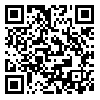BibTeX | RIS | EndNote | Medlars | ProCite | Reference Manager | RefWorks
Send citation to:
URL: http://hayat.tums.ac.ir/article-1-207-en.html
Background & Aim: The severe pain of labor is the important cause of fear and anxiety in pregnant women. This study has been performed to evaluate effect of education on midwives practice.
Methods & Materials: This is a quasi-experimental study. That was done 59 midwives in the labor wards of non-educational of Guilan University of Medical Sciences Hospital. Data gathered by a questioner, which its validity was done by panel of experts and reliability by test-retest. 59 midwives were chosen by quota sampling and participated in a one-day workshop. Pretest and post-test questioner completed before and after four months of education by all midwives. Data analyzed by descriptive and inferencing statistical methods with SPSS.
Results: The paired t-test results showed that midwives practice about pain relieving methods changed significantly after workshop (p<0.005). Analytical methods demonstrated that there was no significant difference between mean practice scores and demographic characteristics of midwives. Conclusion: This study showed that teaching through workshop can improve the use of pain-relieving methods by midwives in labor wards especially more simple and efficacious methods.
| Rights and permissions | |
 |
This work is licensed under a Creative Commons Attribution-NonCommercial 4.0 International License. |





